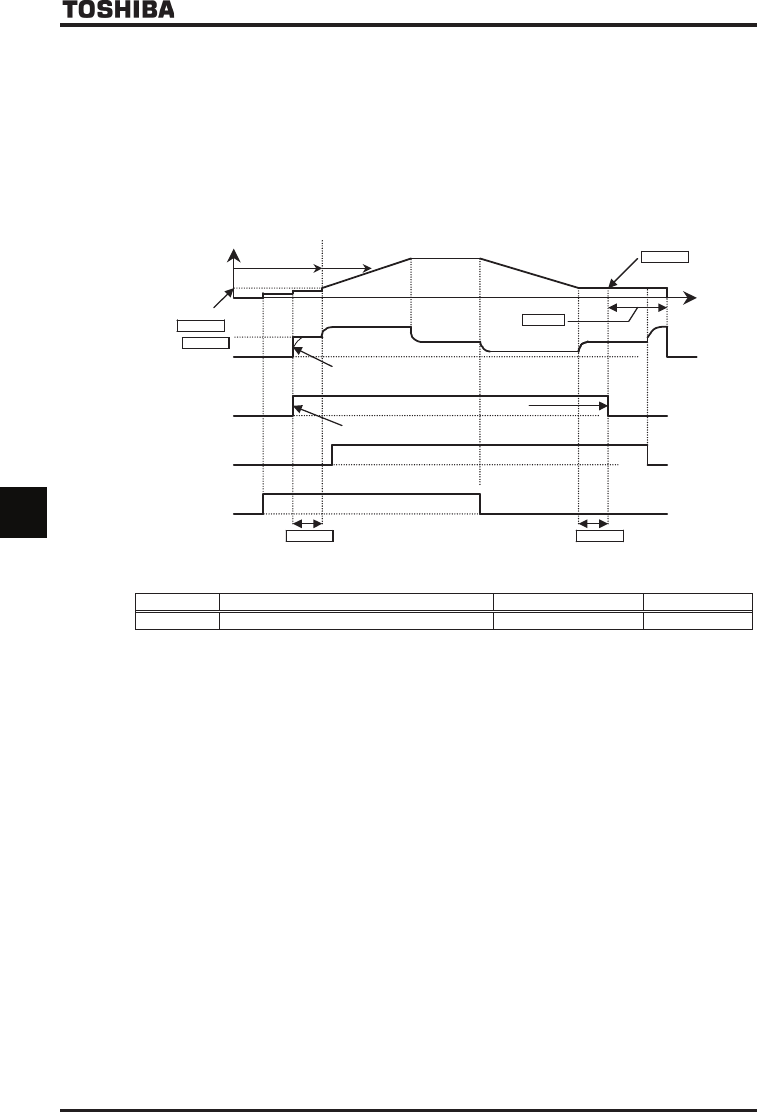
E6581301
F-30
6
■ Starting procedure
At the run command, the inverter makes the motor produce the torque specified with parameter H. As soon
as a torque output command is issued, a brake release request signal is put out through the brake output terminal.
Upon expiration of the brake release time set with H, the motor starts to accelerate.
■ Stopping procedure
At the stop command, the operation frequency is decreased to the creep frequency set with parameter H,
and put out the braking request after the creep time 1 set with H. And then, the creep frequency is
maintained for the creep time set with H. While the creep frequency is maintained, the brake release signal is
put out through the braking signal output terminal to apply the brake.
Output frequency
[Hz]
Torque
H
Braking signal
RUN command
Time [s]
Torque control Speed control
H
H
Braking request
Brake release request
Issue of torque command
Creepinjg frequency
H
Starting frequency
H
Braking operation
H
Ex.) When using the OUT1 terminal as the brake signal output terminal
Title Function Adjustment range
Example of setting
H Output terminal function selection 1 (OUT1) ~
■ Learning function [H]
Using this function, rough settings can be made automatically and also parameters H, Hand H
can be set automatically.
[Learning operation]
Set parameter H to and enter an operation command to start learning. (The frequency and “VWP” are
displayed alternately.)
Parameter H (torque) is set, the brake release timing is calculated, and parameter H (release time) is
set based on the calculation result. H is set automatically according to the motor constant calculated. At the
stop of operation, H (creep time) are set.
Note1: Learning should be performed under light-load conditions.
Note2: For the braking functions, the pre-excitation time is automatically determined by the inverter from
motor-related constants.
When the VFAS1-2037PL is used in combination with a Toshiba 4P-3.7kW-60Hz-200V standard motor, the
preliminary excitation time is approximately 0.1 to 0.2 seconds.
Depending on the motor used, the preliminary excitation time may be prolonged.
Note3: When using braking functions, set parameter CW (automatic torque boost) to (voltage vector control +
auto-tuning 1) or set motor-related parameters H to H.
Note 4: If a counterweight is provided, a learning error may occur. If so, make an adjustment manually.
Note 5: Brake learning (H=) should be carried out for normal rotation if H is set to (forward
winding), or for reverse rotation if H is set to (reverse winding).


















